By Wayne Henderson -
As I have mentioned before, not all coaches have the luxury of state of the art training facilities, massive budgets to allow the purchase of any training equipment the coach’s desire or limitless hours with your goalkeepers every week.
This drill is designed with this in mind. Sometimes it is vital to make the most of what little time you have with your goalkeepers, and this drill is one that gives your goalkeepers a vast amount of saves and a great amount of different types of saves within a relatively short space of time.
The set up
3 feeders, 1 working goalkeeper, a bag of footballs and 1 penalty area.
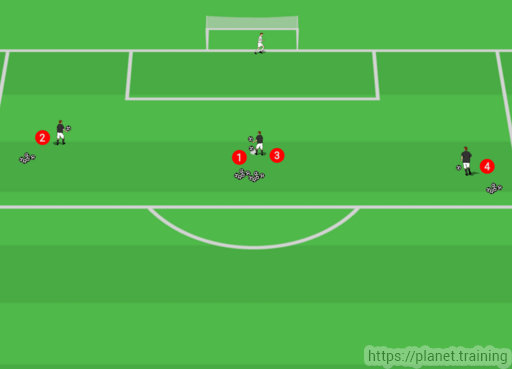
The goalkeeper is facing side on towards the left side of his/her goal. The drill is going to start with the first feed from the feeder on the penalty spot. (a low shot along the ground towards the goalkeepers bottom right corner)
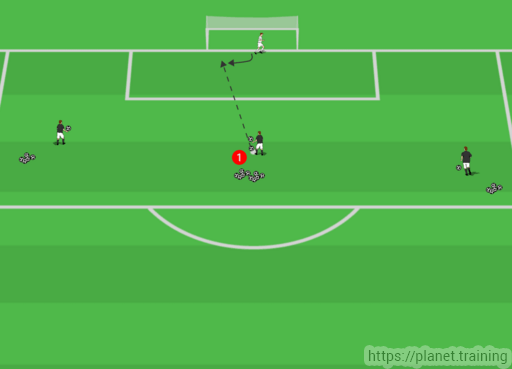
On the coaches command the keeper turns sharply in time to see the coach strike the ball towards the bottom right corner, and make the required save. If the ball is caught by the ‘keeper he/she returns the ball to the original feeder, if the ball is dropped or parried back into play the goalkeeper must collect the rebound and return the ball to the original feeder. If the ball is tipped out of play, that is fine and the drill continues as normal.
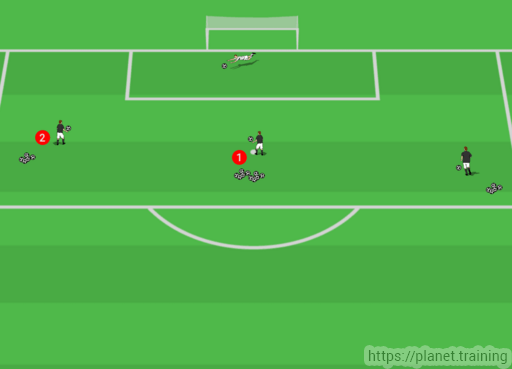
After making the first save the keeper must quickly get into position for the 2nd feed - an angled ½ volley strike at goal from the wider area. As before, when the ball is caught it is returned to the original feeder If the ball is parried still in play the ‘keeper must react to collect the stray ball before returning it to the original feeder and if the ball is out of play the drill continues as normal.
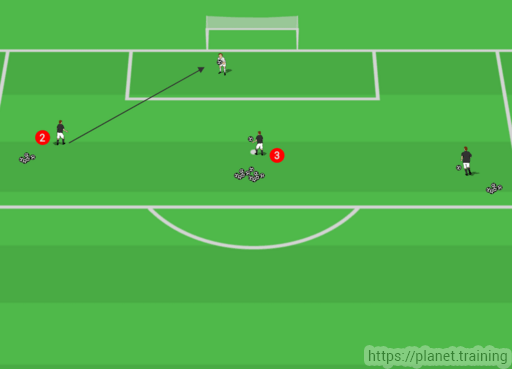
The goalkeeper now moves quickly to touch the centre point of the 6 yard box with his or her hand. This action is now taking the goalkeeper out of position in order to perform a “recovery save” which is replicating a lob or a chip shot over the ‘keepers head. This feed will be delivered from the feeder on the penalty spot.
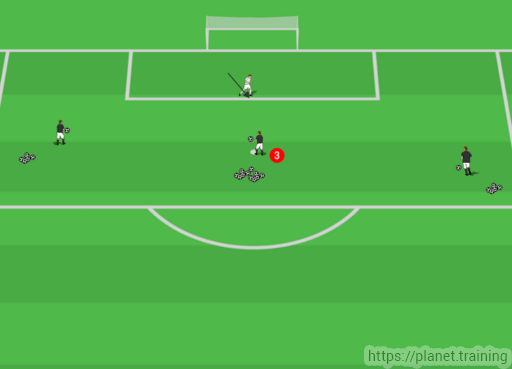
The feeder from the penalty spot must make a perfect throw, allowing the goalkeeper just enough time to move sharply back towards the left hand side of the goal and perform a high diving save to either catch the ball or tip the ball over the bar (or around the post, depending on where the feeder throws the ball)
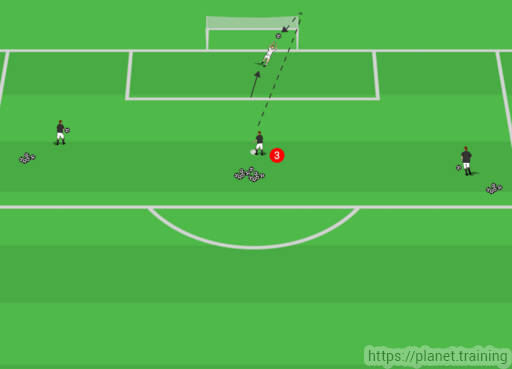
As before any balls not tipped out of play must be returned to the original feeder.
The goalkeeper must now recover quickly to get into position the make the 4th and last save from the feeder on the other angle of the box; this shot is a strike from the ground.
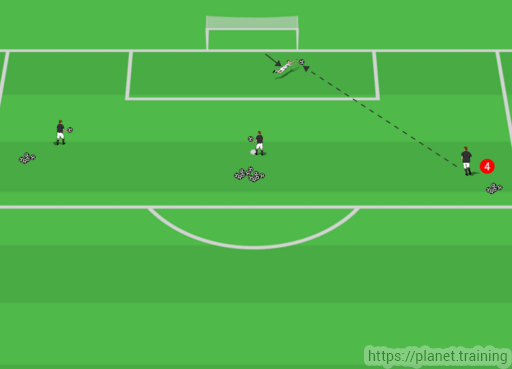
As this drill can be very demanding physically, it is best performed with older fitter goalkeepers, but it can be adapted to use with younger ‘keepers.
By splitting the drill in half and only working the 1st 2 saves as one part of the drill and then working the 3rd and 4th saves as a separate 2nd part, this reduces the work load but allows you to still get the same variation of saves without the increased workload.
Variations
Although feed number 3 (the recovery save) would stay the same, you can vary every other save as you would prefer
Feed number 1 could be a medium height throw from hand
Feed number 2 could be a ½ volley low, and
Feed number 4 could be side volley.
The variations are limitless.
Remember to work both sides for the goalkeeper.
Coaching points
The timing and quality of the feeds and strikes at goal are vital to the quality of this drill.
By Wayne Henderson


